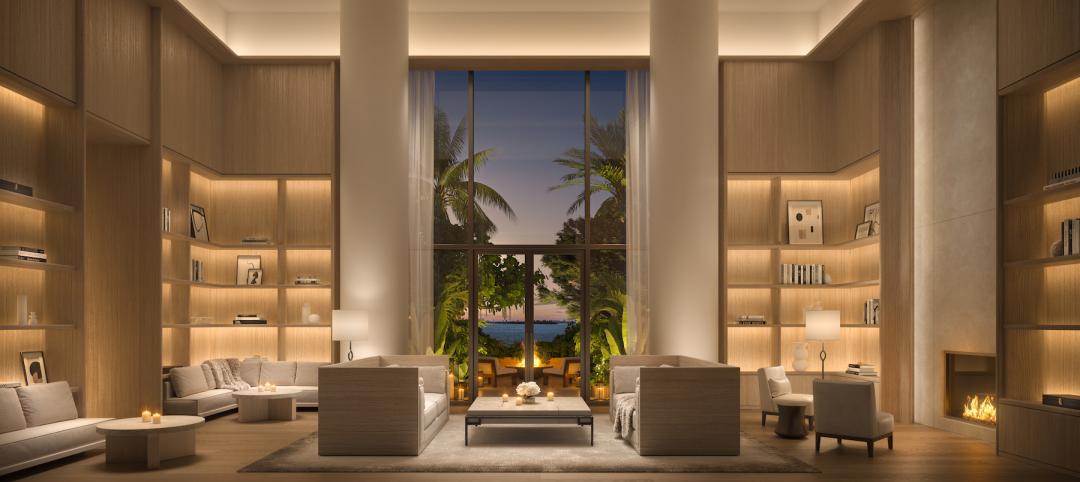“Star Wars” creator George Lucas has submitted plans to the Marin County (Calif.) Development Agency to build 224 units of affordable workforce and senior housing on 52 acres at Grady Ranch.
This proposal is the latest broadside in an ongoing battle between Lucas and residents of this affluent neighborhood who, in the past, have blocked Lucas’s efforts to expand his production company, Lucasfilms. Two years years ago, Lucas also encountered opposition to his plan to sell land at Grady Ranch to a developer for affordable housing.
Lucas, who has owned land in Marin County since 1978 (that property is called Skywalker Ranch), said he would build the housing himself, but that project lost its financial backing in 2013. The Marin Independent Journal reported at the time that the costs for the project would fall somewhere between $120 million and $150 million.
Now, Lucas—whom Forbes estimates is worth $5.1 billion—says he will finance 100% of the housing project, according to Gary Giacomini, former county supervisor and an attorney for Skywalker Properties.
The initial reactions to Lucas’s latest proposal have been mixed, with one local supervisor worrying about the “cumulative impact” of a project that large on the community. Other supervisors see the proposal as an opportunity to make a dent in the county’s shortage of affordable housing. Thomas Peters, CEO of the Marin Community Foundation, called Lucas’ plan an “extraordinary offer” that underscores the filmmaker’s commitment to the housing needs of the vibrant workforce that drives the region’s vitality. (Ironically, the Foundation was the financial backer that bailed on Lucas’s housing plans two years ago.)
Lucas’s proposal call for 120 two- and three-bedroom workforce rental homes in one four-story cluster and two two-story clusters. There would also be 104 one- and two-bedroom residences for seniors in a four-story cluster, according to the Independent Journal. Zoning at Grady Ranch allows for up to 324 homes at this site, which is where Lucas had originally intended to expand his studio facilities.
The architect for this project is Robert W. Hayes of Sausalito, and the project is being coordinated and managed by PEP Housing of Petaluma, which developed Toussin Senior Apartments, an affordable complex that Hayes had designed.
Applicants for the workforce housing need to be earning less than 80% of the market’s median household income. The seniors applying for housing need to fall within 30% and 60% of that median. Quoting Census estimates, the Washington Post reports that 7.7% of the county’s residences live below its $90,839 median income level.
Related Stories
Multifamily Housing | Aug 23, 2023
Constructing multifamily housing buildings to Passive House standards can be done at cost parity
All-electric multi-family Passive House projects can be built at the same cost or close to the same cost as conventionally designed buildings, according to a report by the Passive House Network. The report included a survey of 45 multi-family Passive House buildings in New York and Massachusetts in recent years.
Apartments | Aug 22, 2023
Key takeaways from RCLCO's 2023 apartment renter preferences study
Gregg Logan, Managing Director of real estate consulting firm RCLCO, reveals the highlights of RCLCO's new research study, “2023 Rental Consumer Preferences Report.” Logan speaks with BD+C's Robert Cassidy.
Adaptive Reuse | Aug 16, 2023
One of New York’s largest office-to-residential conversions kicks off soon
One of New York City’s largest office-to-residential conversions will soon be underway in lower Manhattan. 55 Broad Street, which served as the headquarters for Goldman Sachs from 1967 until 1983, will be reborn as a residence with 571 market rate apartments. The 30-story building will offer a wealth of amenities including a private club, wellness and fitness activities.
Sustainability | Aug 15, 2023
Carbon management platform offers free carbon emissions assessment for NYC buildings
nZero, developer of a real-time carbon accounting and management platform, is offering free carbon emissions assessments for buildings in New York City. The offer is intended to help building owners prepare for the city’s upcoming Local Law 97 reporting requirements and compliance. This law will soon assess monetary fines for buildings with emissions that are in non-compliance.
Sponsored | Multifamily Housing | Aug 15, 2023
Embracing Integrations: When Access Control Becomes Greater Than the Sum of Its Parts
Multifamily Housing | Aug 11, 2023
Hotels extend market reach with branded multifamily residences
The line separating hospitality and residential living keeps getting thinner. Multifamily developers are attracting renters and owners to their properties with hotel-like amenities and services. Post-COVID, more business travelers are building in extra days to their trips for leisure. Buildings that mix hotel rooms with for-sale or rental apartments are increasingly common.
MFPRO+ New Projects | Aug 10, 2023
Atlanta’s Old Fourth Ward gets a 21-story, 162-unit multifamily residential building
East of downtown Atlanta, a new residential building called Signal House will provide the city with 162 units ranging from one to three bedrooms. Located on the Atlanta BeltLine, a former railway corridor, the 21-story building is part of the latest phase of Ponce City Market, a onetime Sears building and now a mixed-use complex.
Senior Living Design | Aug 7, 2023
Putting 9 senior living market trends into perspective
Brad Perkins, FAIA, a veteran of more than four decades in the planning and design of senior living communities, looks at where the market is heading in the immediate future.
Multifamily Housing | Jul 31, 2023
6 multifamily housing projects win 2023 LEED Homes Awards
The 2023 LEED Homes Awards winners in the multifamily space represent green, LEED-certified buildings designed to provide clean indoor air and reduced energy consumption.
MFPRO+ New Projects | Jul 27, 2023
OMA, Beyer Blinder Belle design a pair of sculptural residential towers in Brooklyn
Eagle + West, composed of two sculptural residential towers with complementary shapes, have added 745 rental units to a post-industrial waterfront in Brooklyn, N.Y. Rising from a mixed-use podium on an expansive site, the towers include luxury penthouses on the top floors, numerous market rate rental units, and 30% of units designated for affordable housing.
















